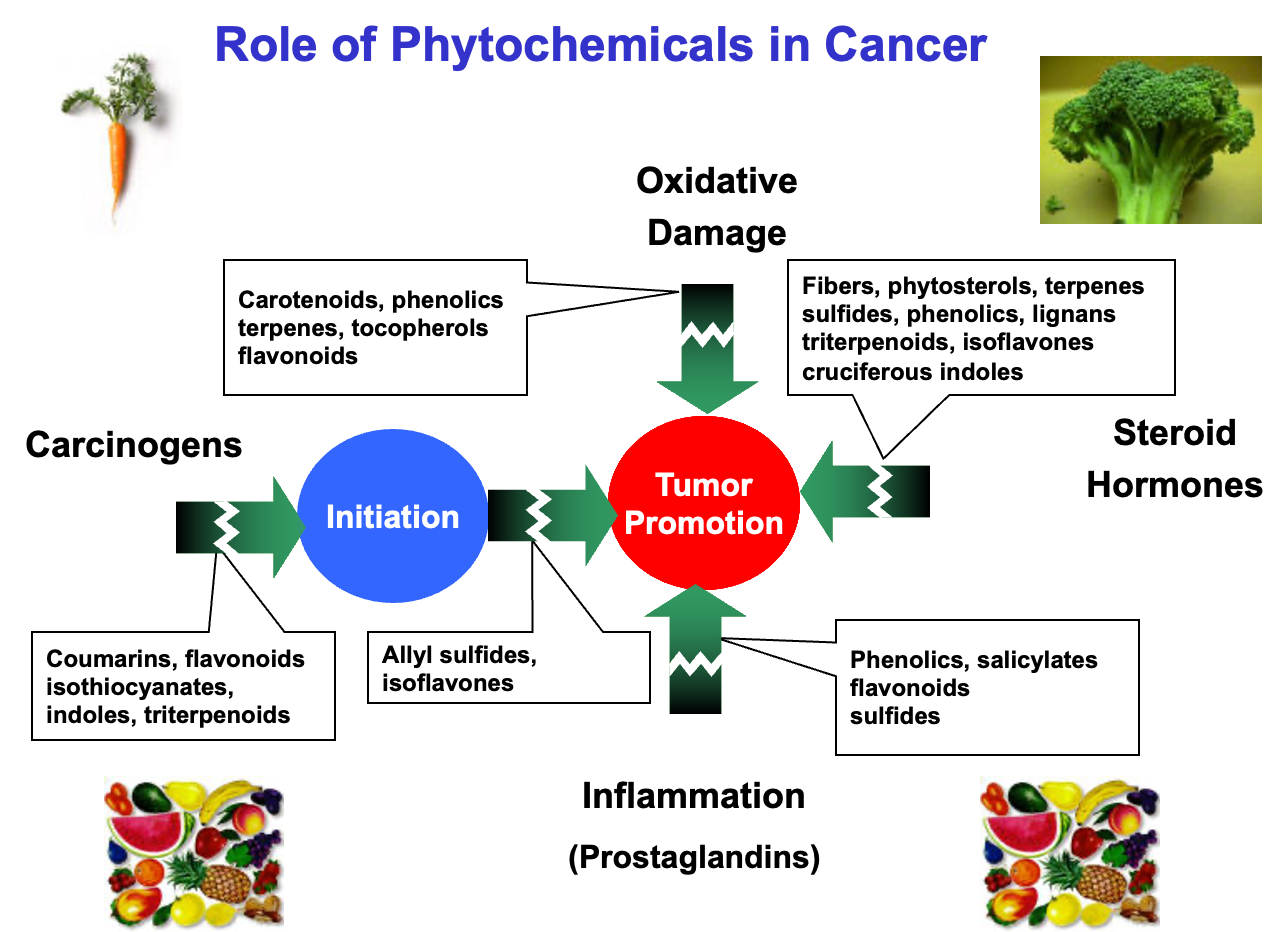Nutr 420- 5. Glucosinolates and Sulfur Compounds
1/29
There's no tags or description
Looks like no tags are added yet.
Name | Mastery | Learn | Test | Matching | Spaced |
|---|
No study sessions yet.
30 Terms
Glucosinolates and Sulfur Compounds
major sources
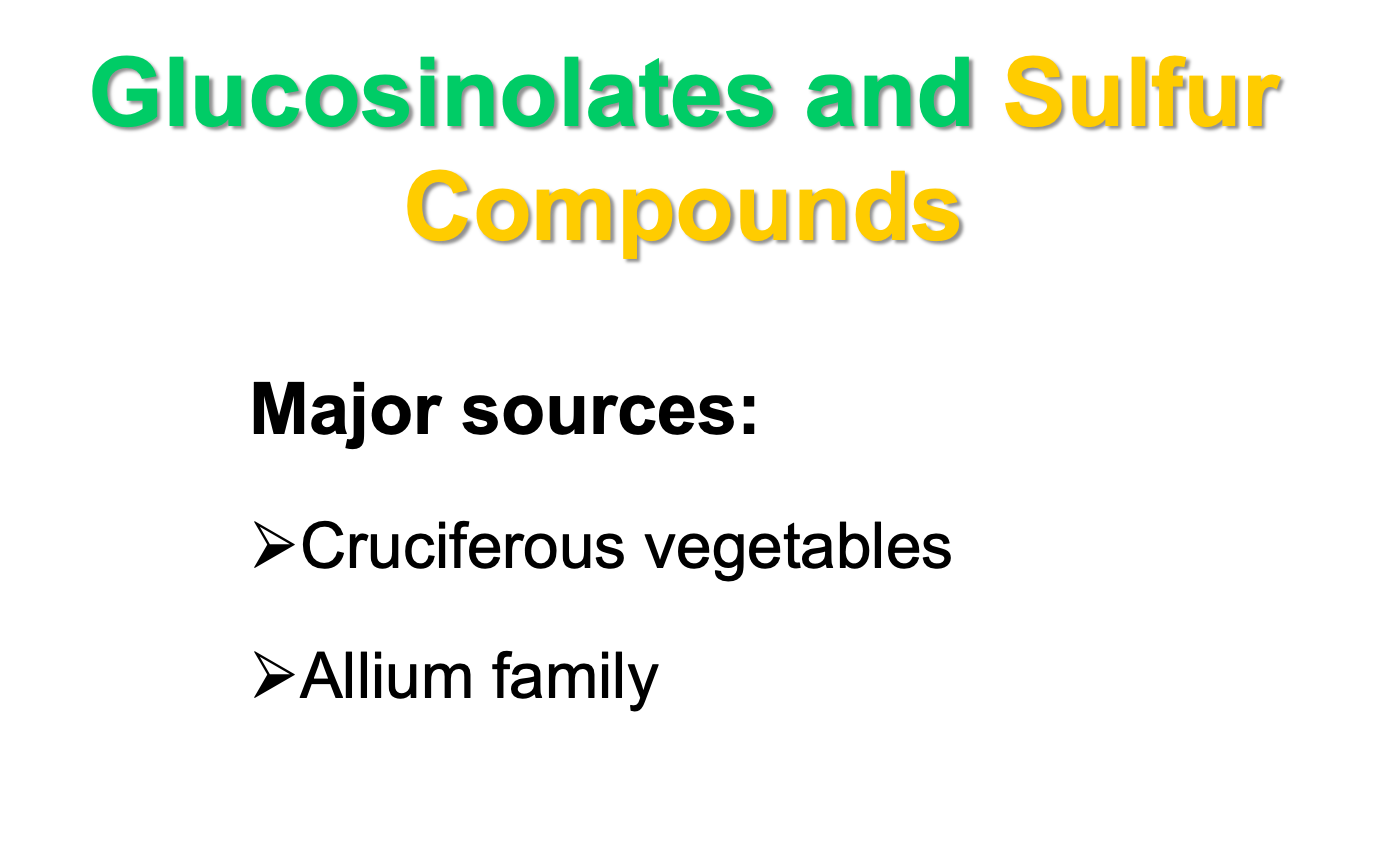
Cruciferous Vegetables
Smelly and pungent
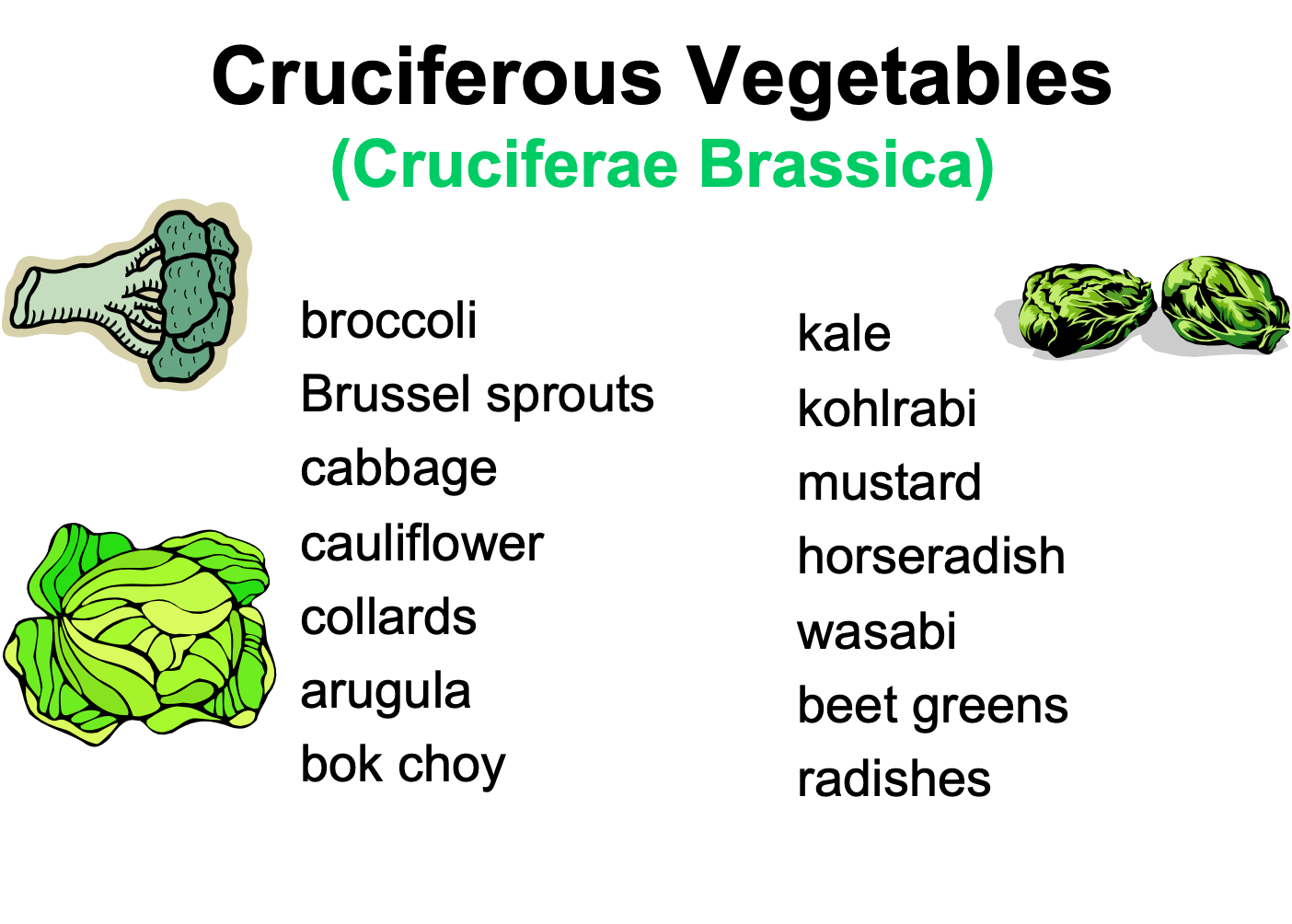
Cohort study showed inverse association between cruciferous vegetables & bladder cancer
Cruciferous- risk was half

Cruciferae Brassica
Important compounds include:
5
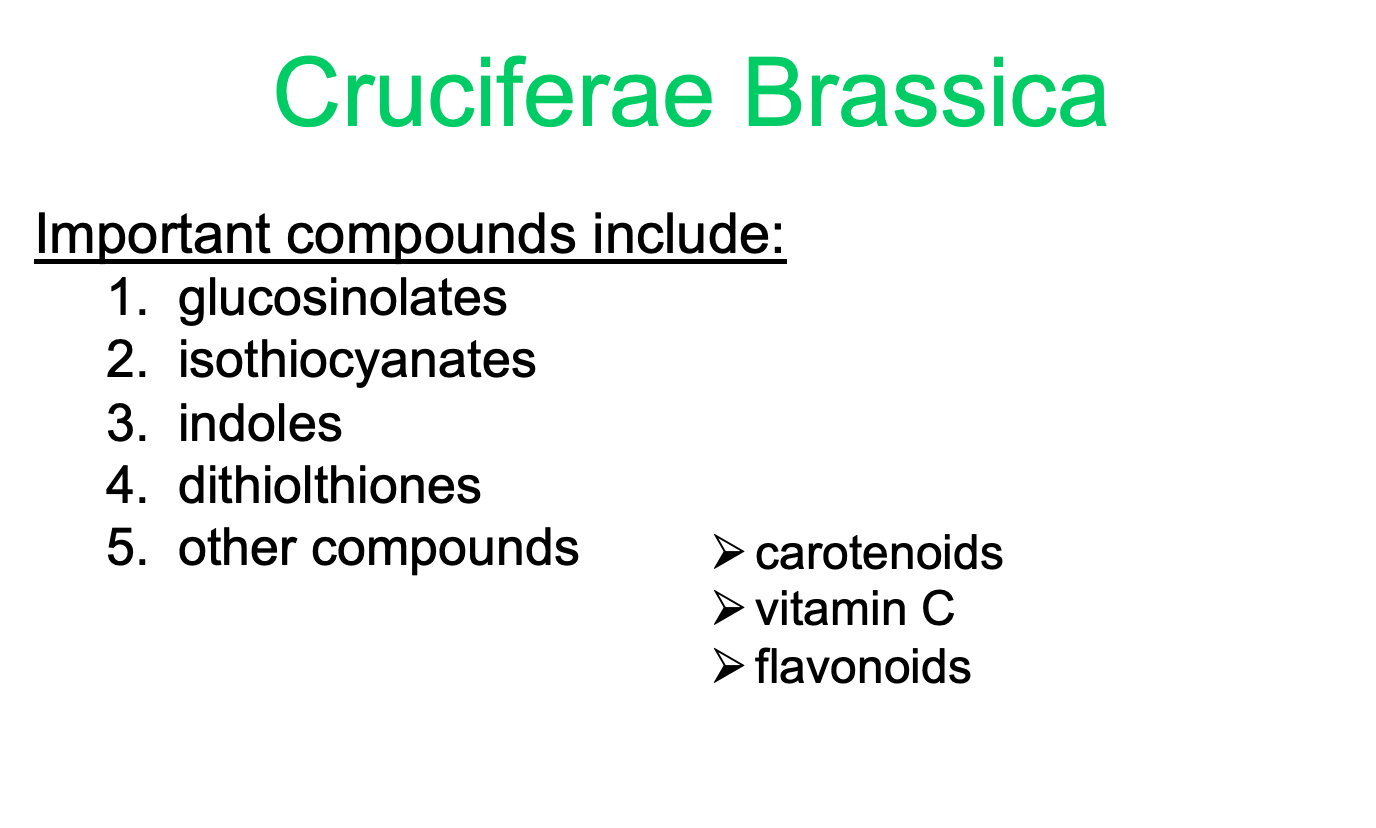
Glucosinolates
Major Sources:
function
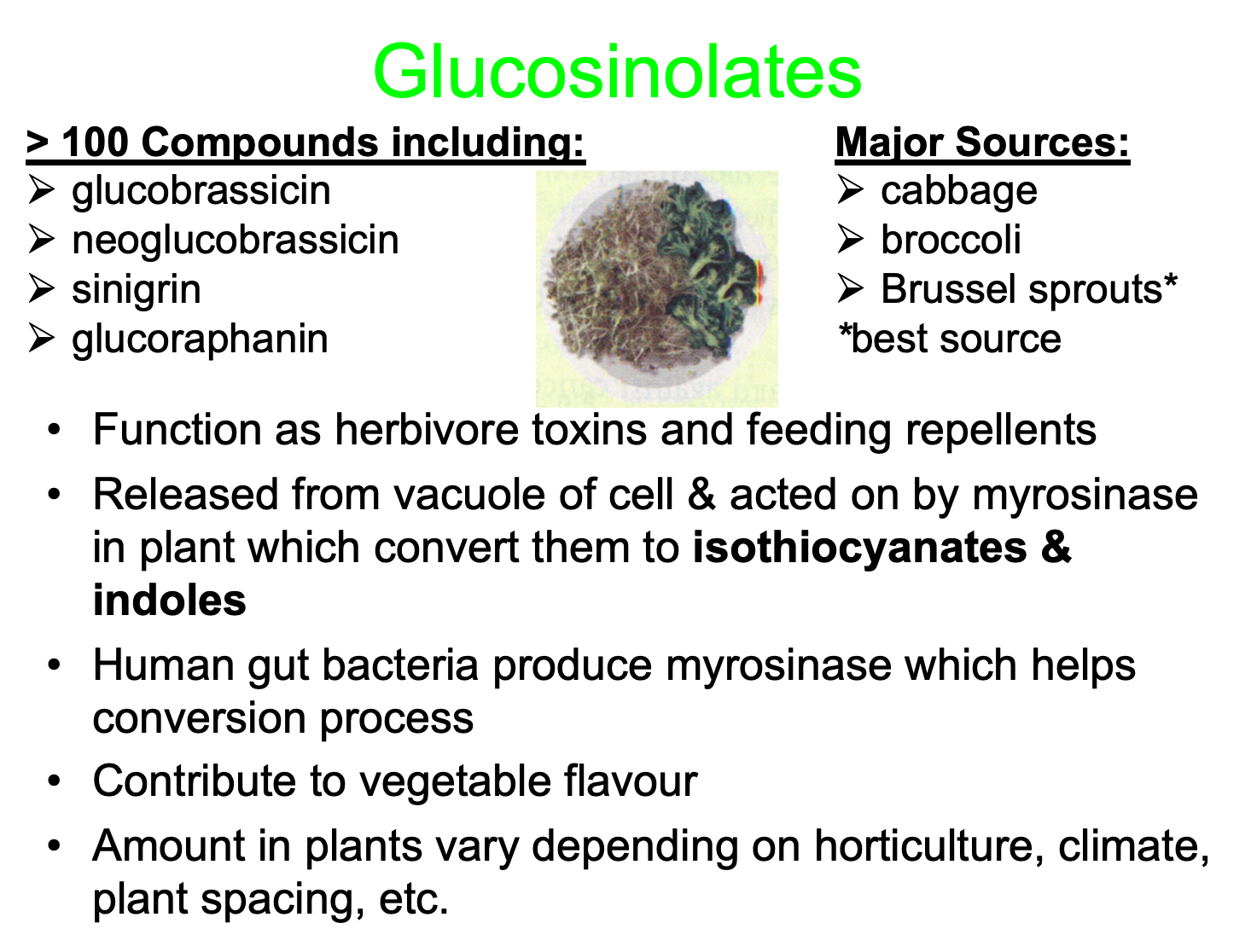
Sinalbin, Sinigrin, Progoitrin
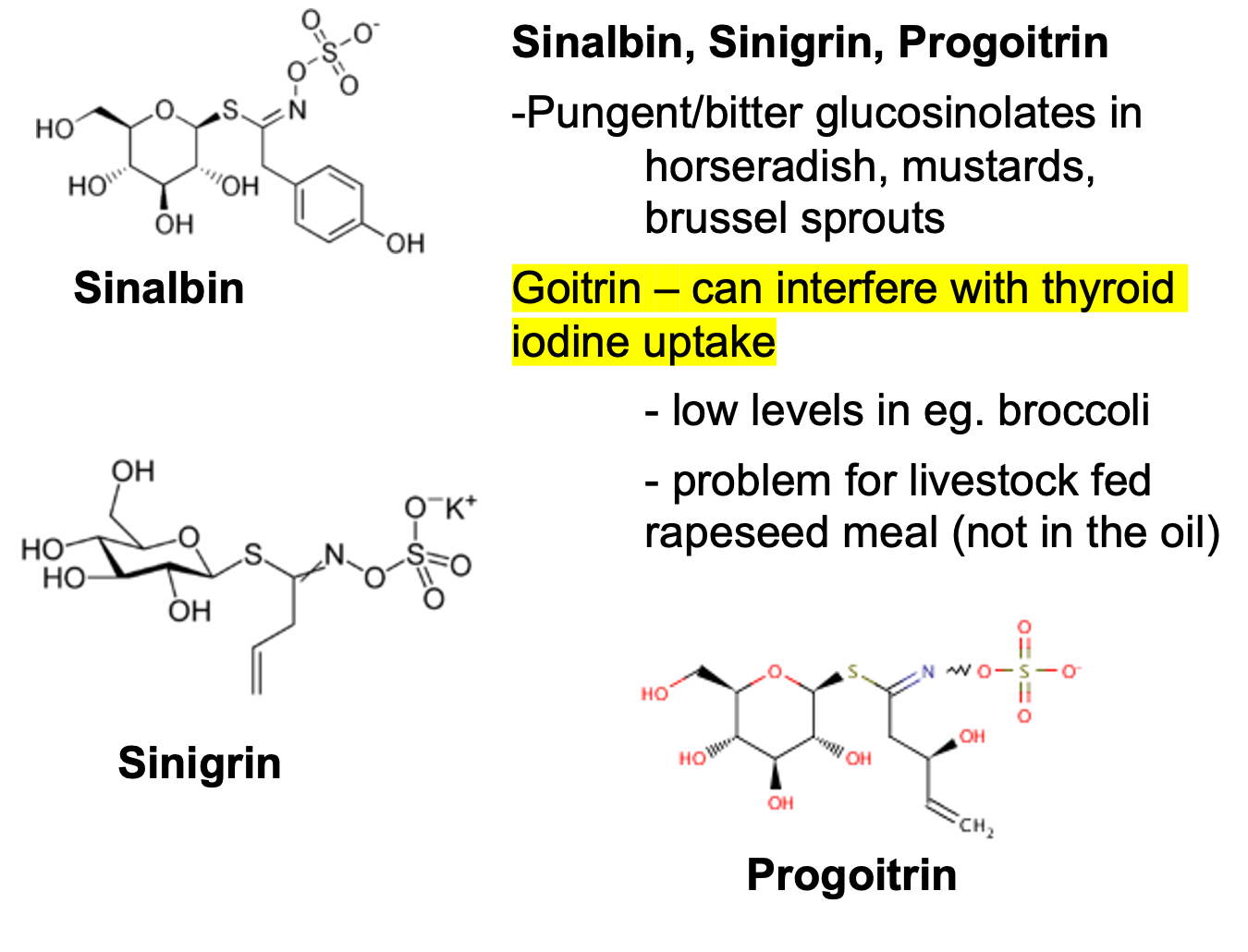
Conversion of glucosinolates to isothiocyanates by plant myrosinase.
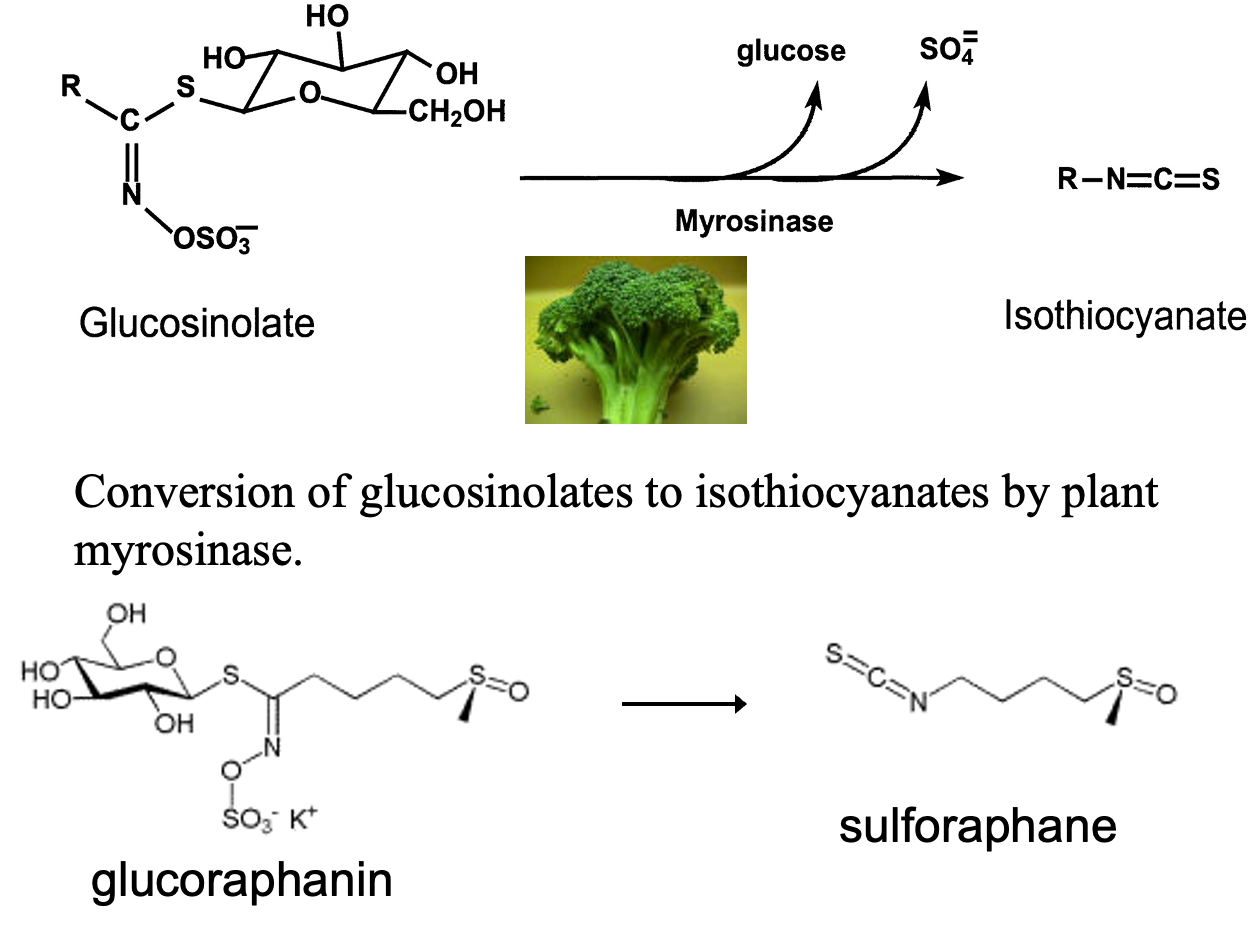
Isothiocyanates
Compounds include:
Mechanism(s)
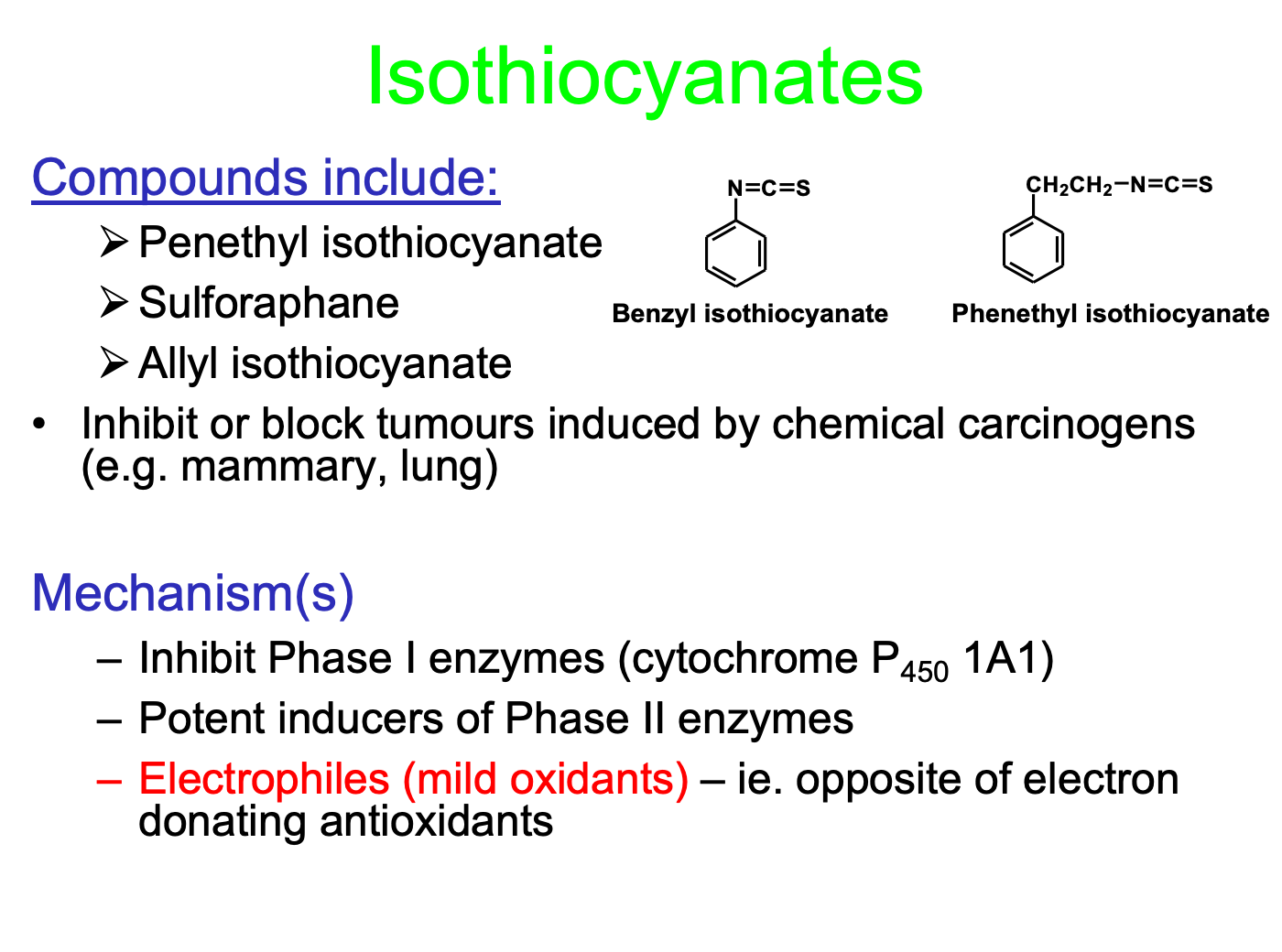
Carcinogenesis
Many carcinogens get activated by phase 1 enzymes phase two kick them out. We want phase two

Phase 2 Enzymes
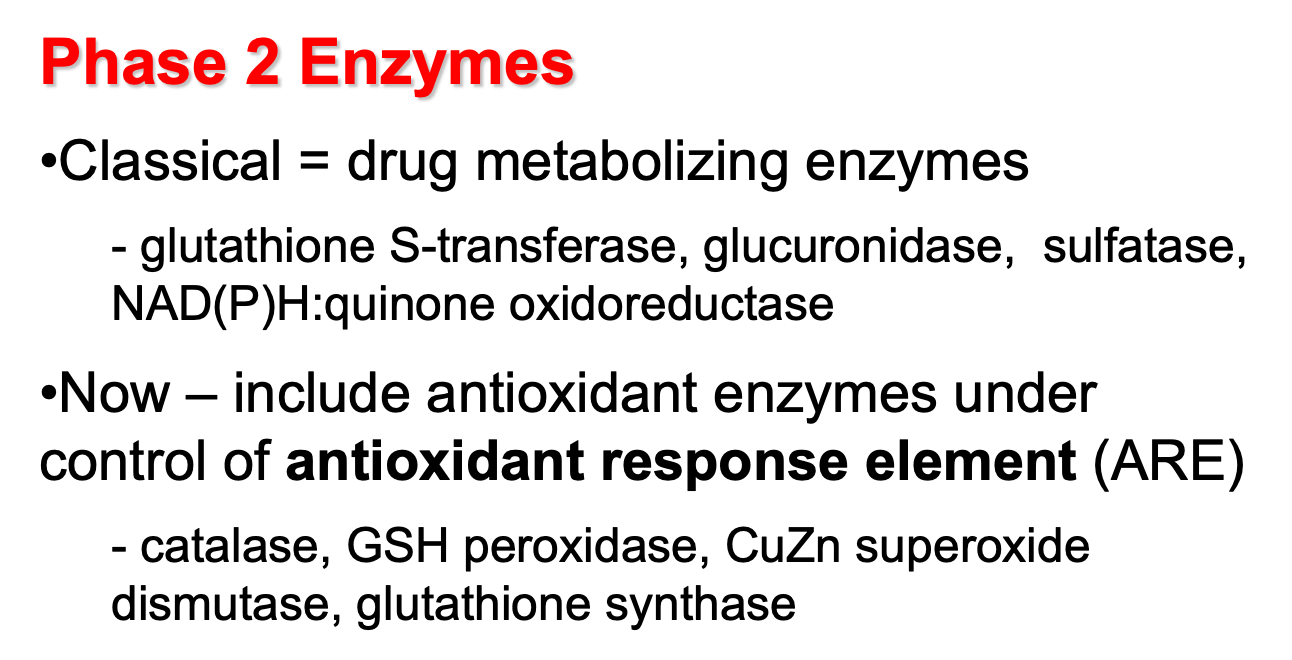
Isothiocyanates inhibit phase I enzymes and induce phase II enzymes
Transcription factor nrk2 gets released form keap 1 then goes to nucleus. The isothiocyaniates act to bind to keep 1 and release it and cause phase 2 enzymes– antioxidant
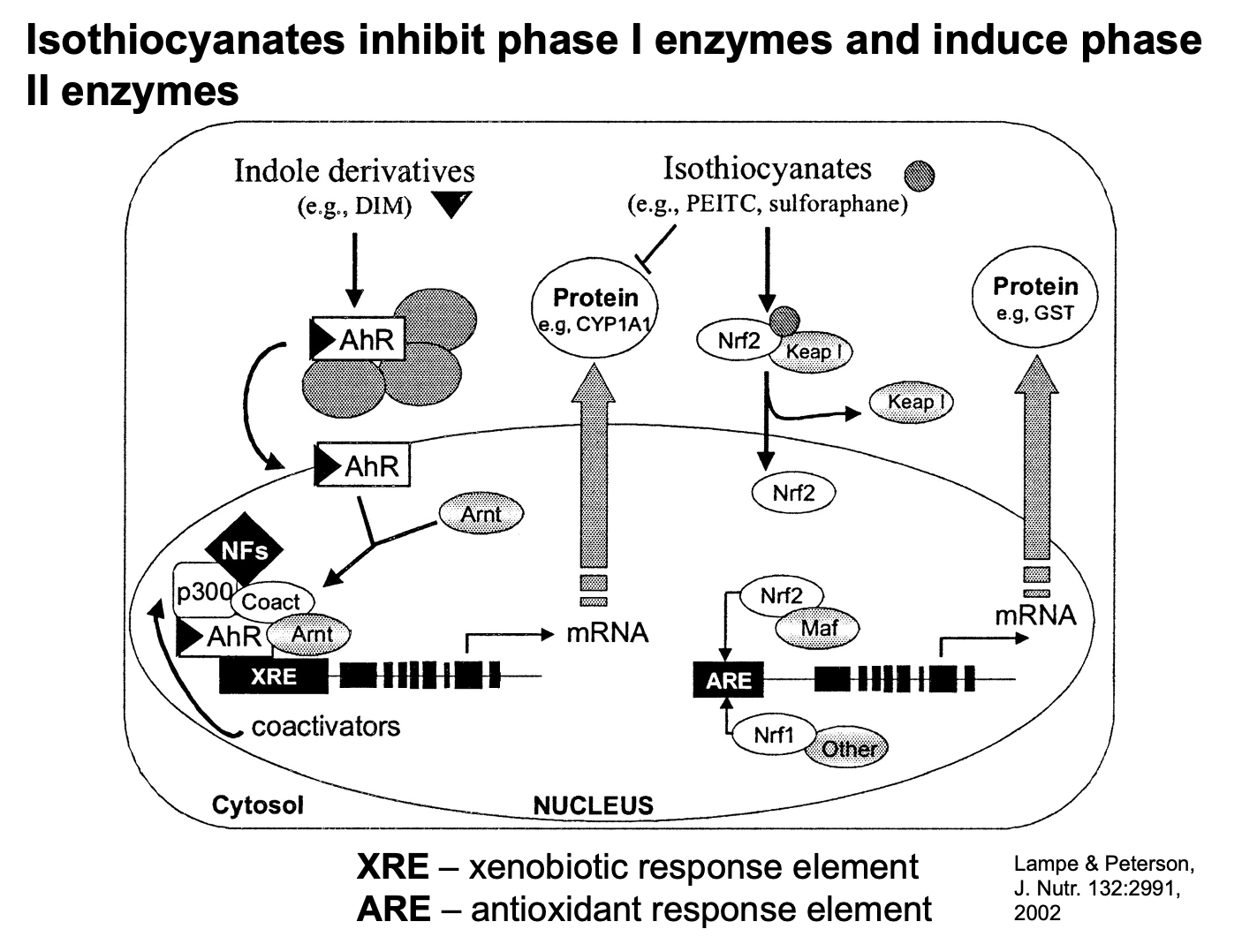
Reversible reaction of sulforaphane with Keap1 cysteine sulfhydryl groups. The asterisk indicates the isothiocyanate electrophilic carbon.
They way they act- keap 1 has a cystine which it wants and attaches
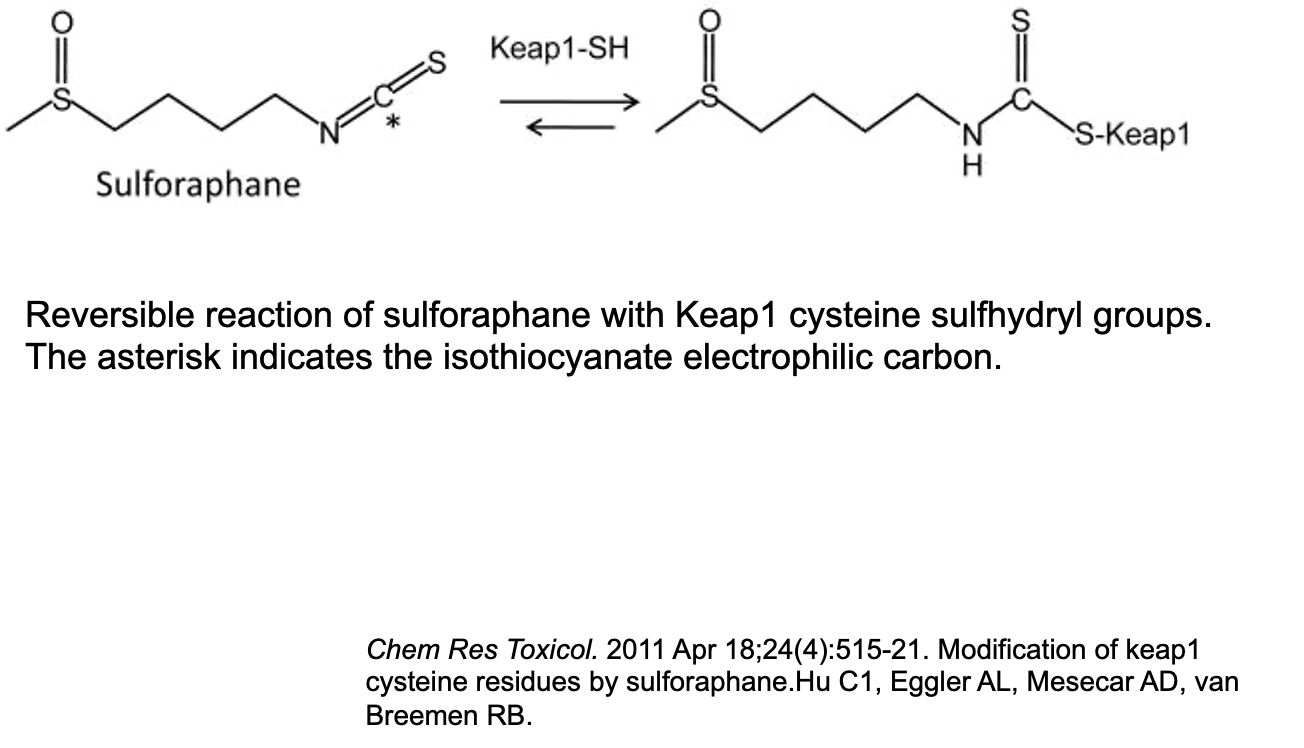
How phytochemicals reduce cancer risk-6
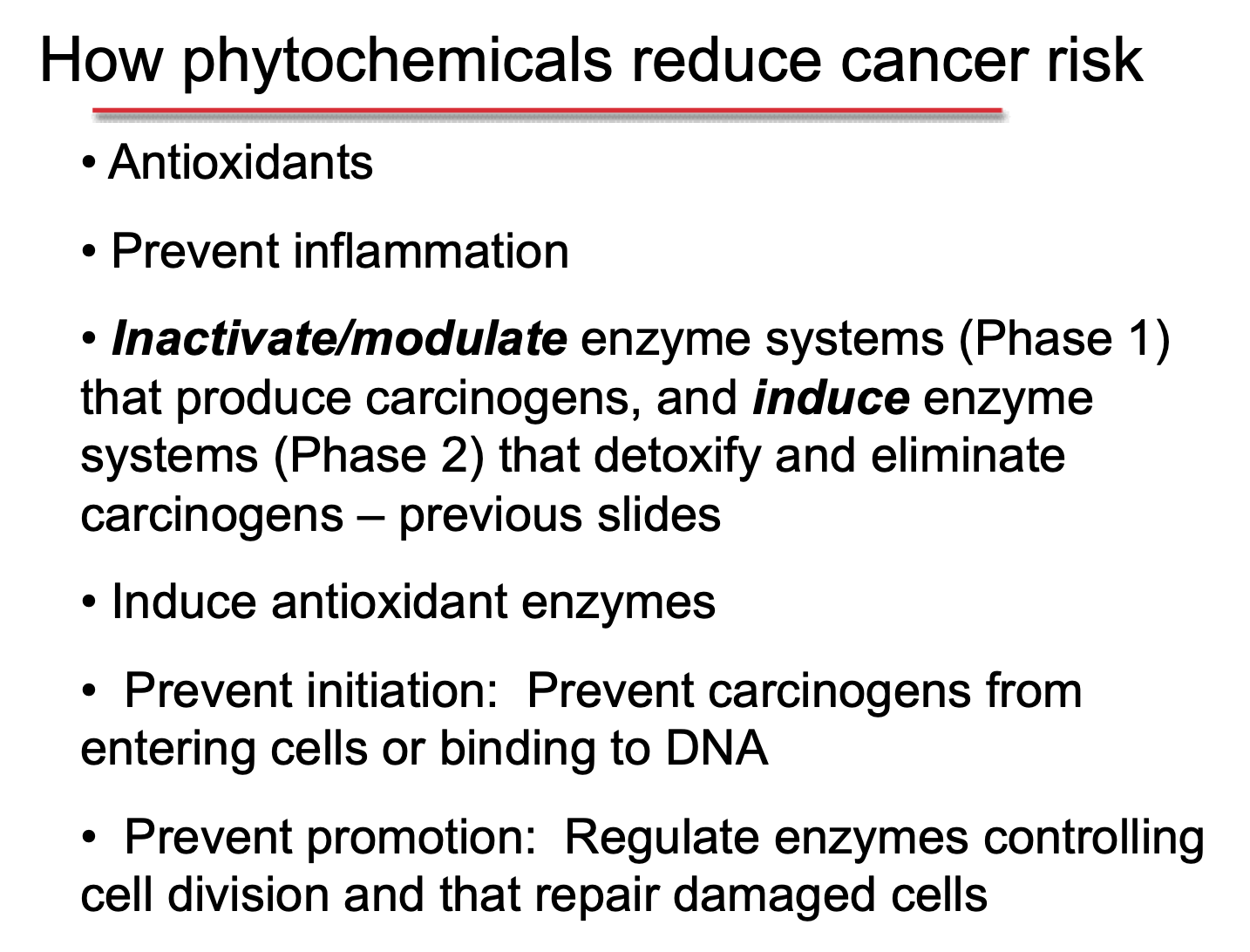
Indoles
examples and mechanisms
Tryptophan is an indole
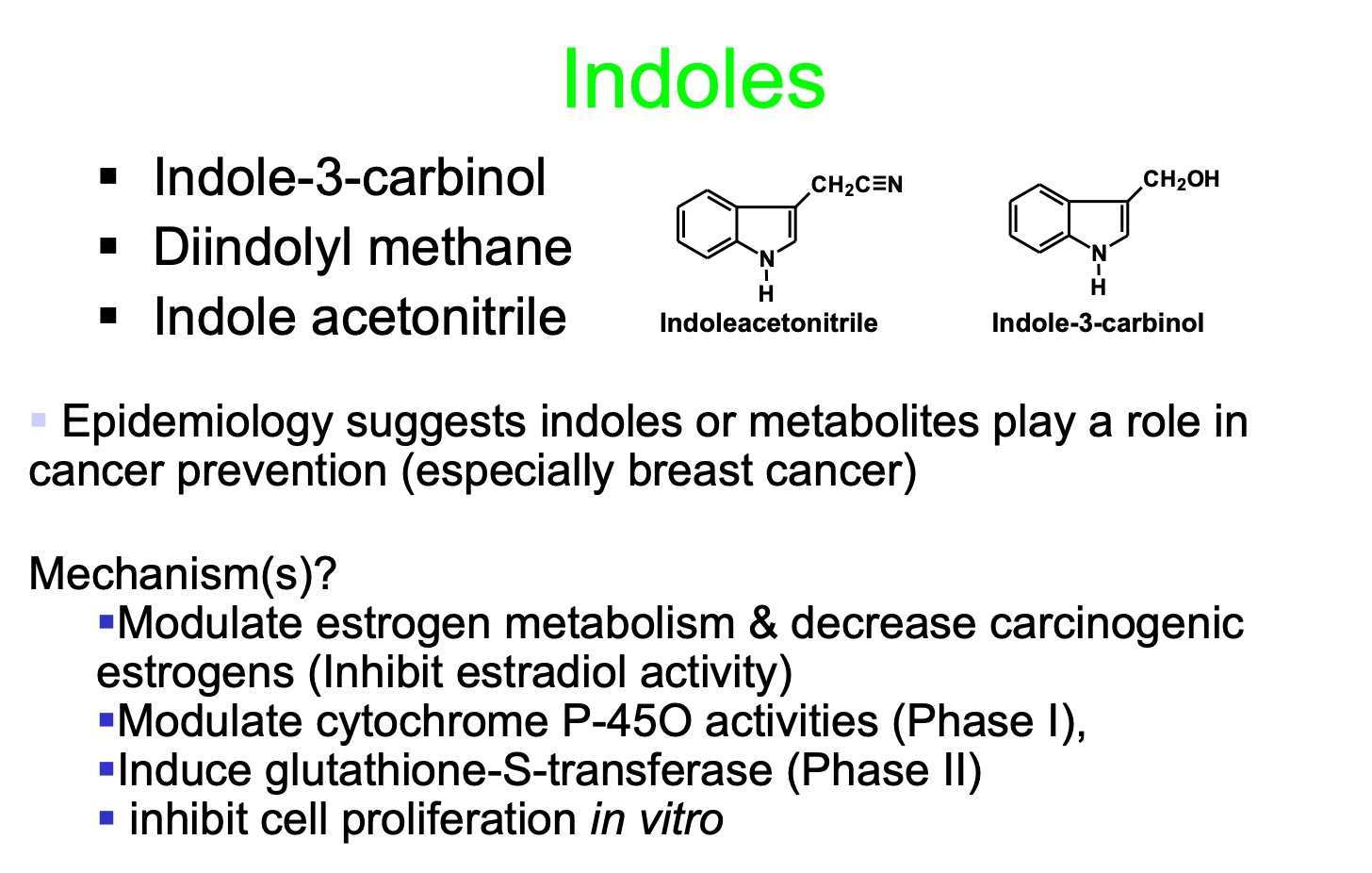
indole enzyme

Bioavailability
of indoles
So if you cook broccoli too much- decrease bioavailability
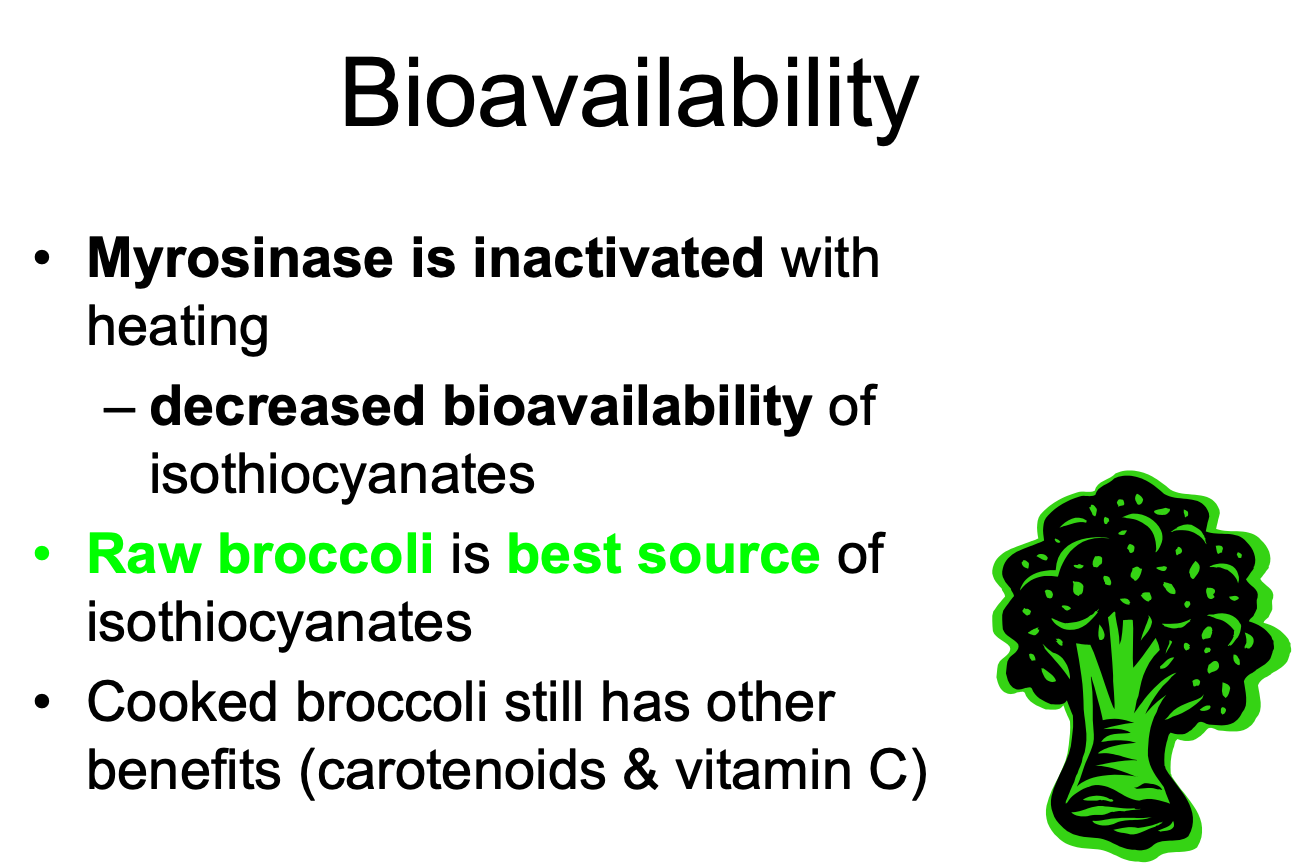
Dithiolthiones
End of cruciferous veg
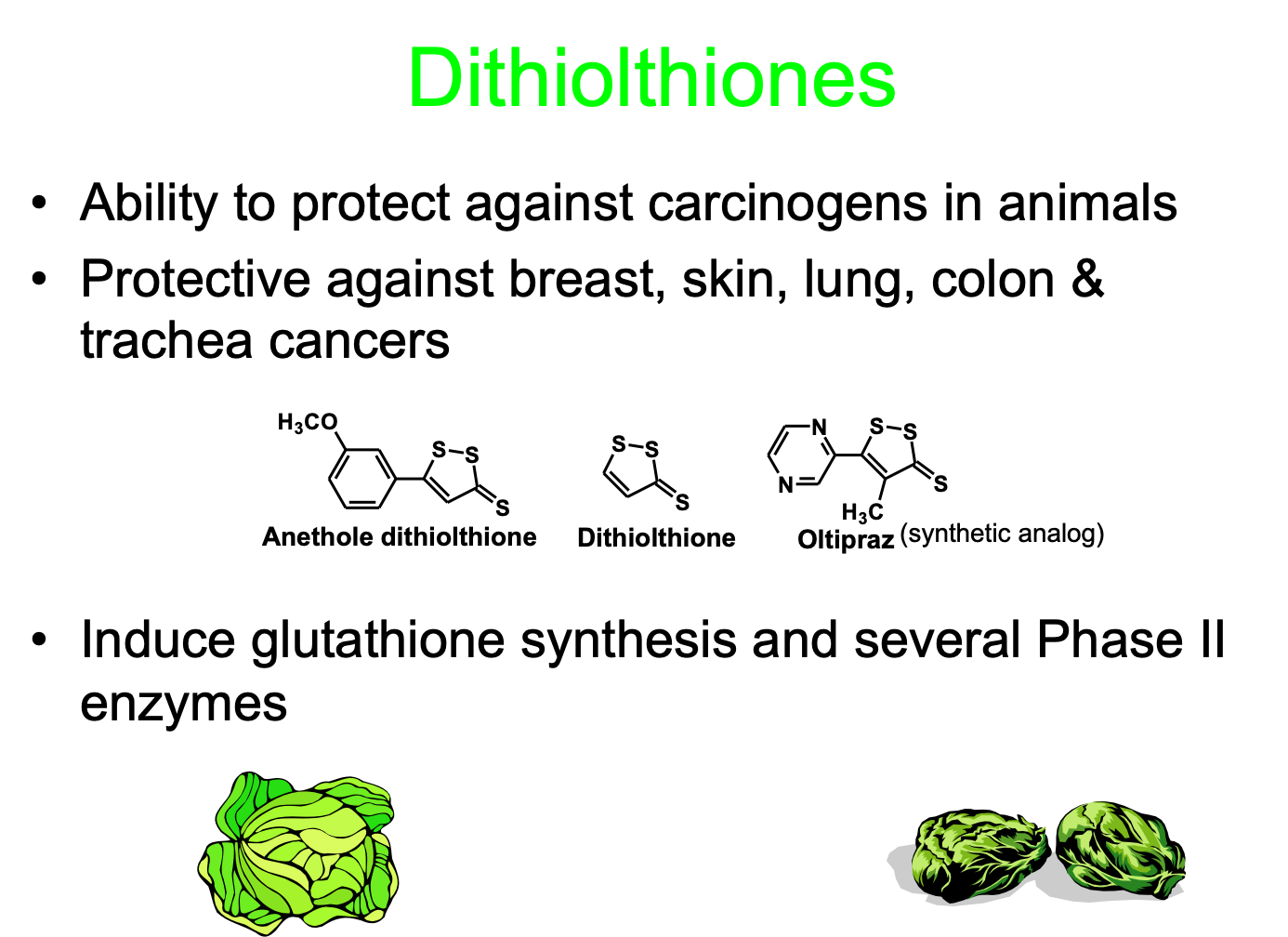
Allyl Sulfides
what are they
what do they do
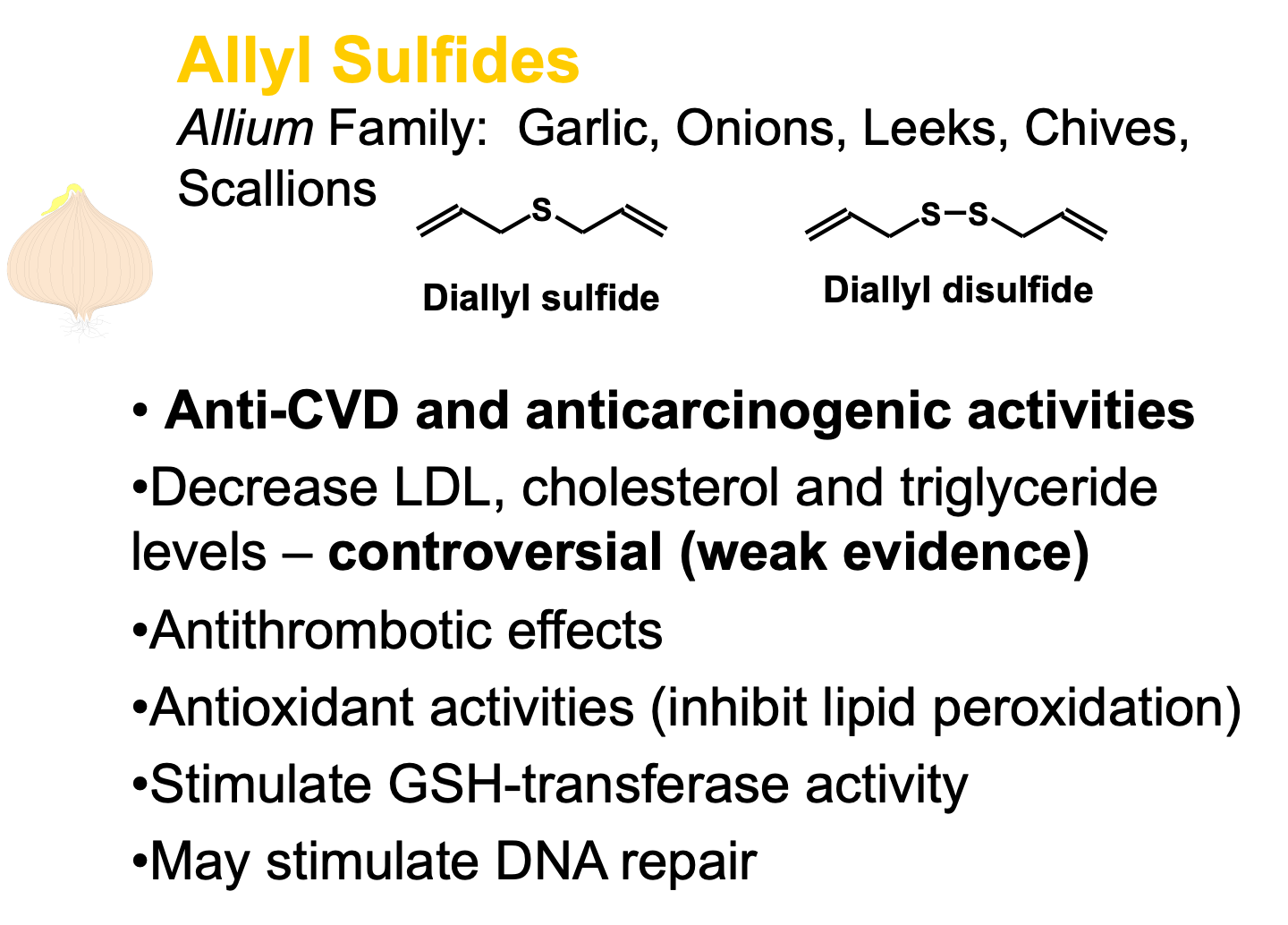
Allicin
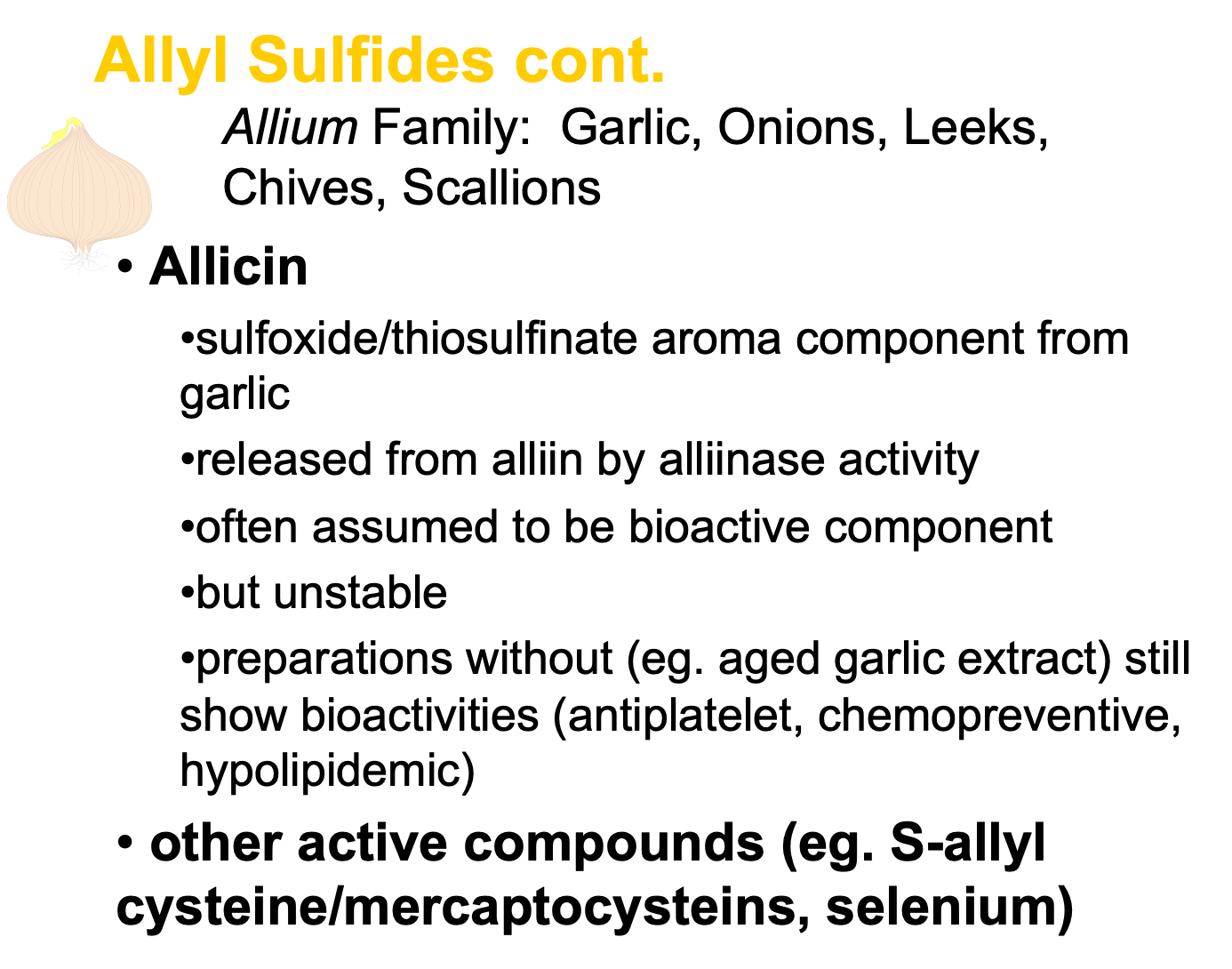
Allicin mech

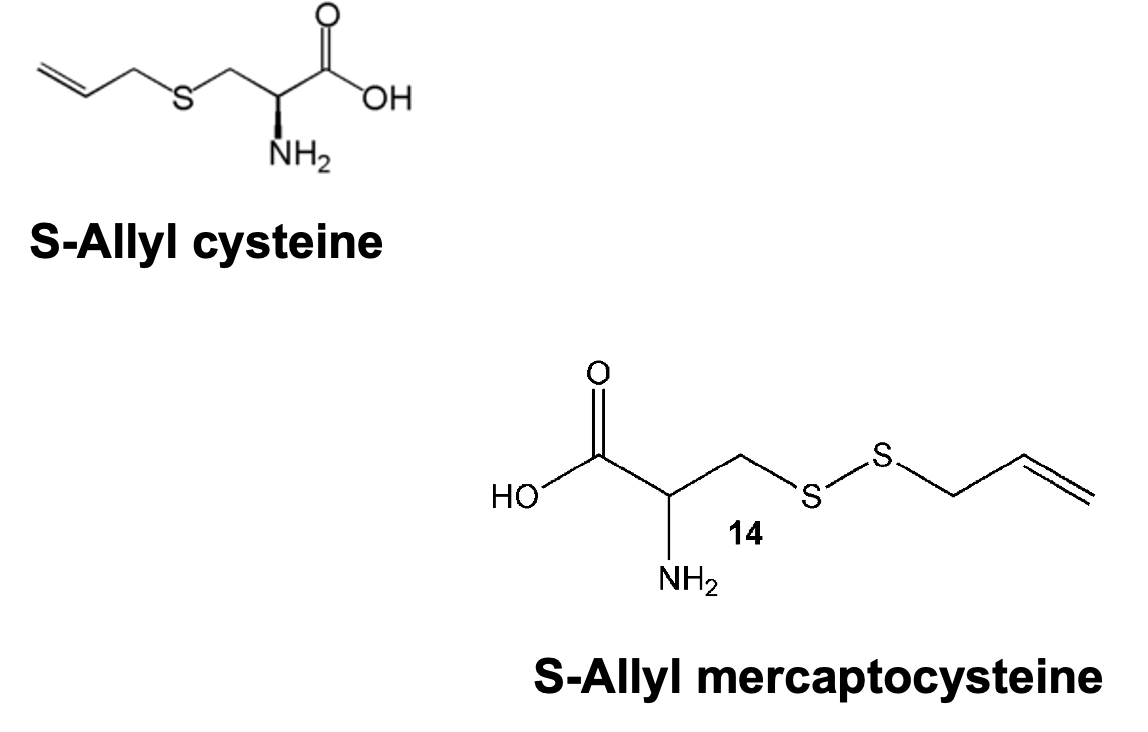
Conclusions and Recommendations
EAT YOUR BROCCOLI WITH RED WINE AND GRAPE JUICE!!
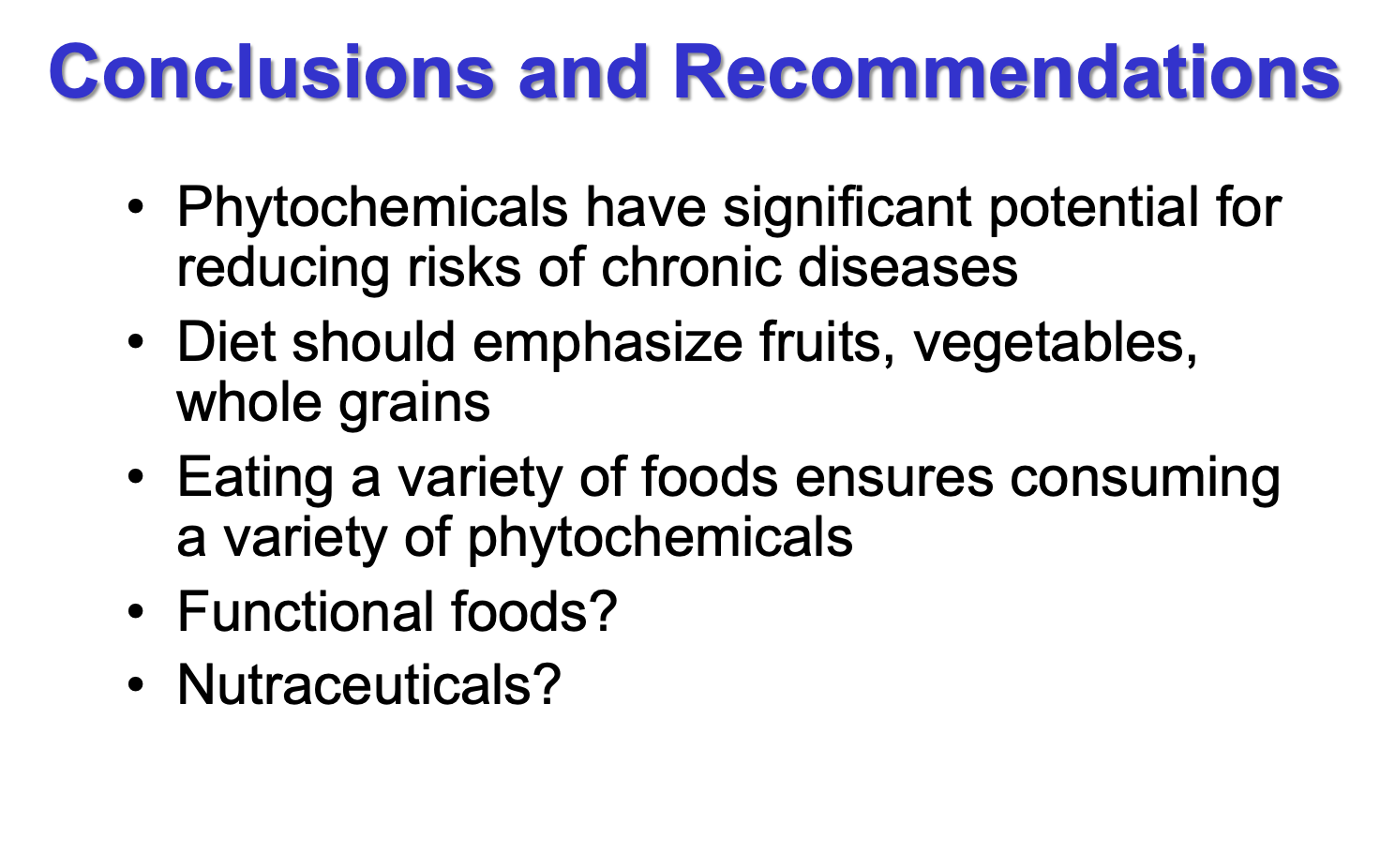
problem with charcol burger
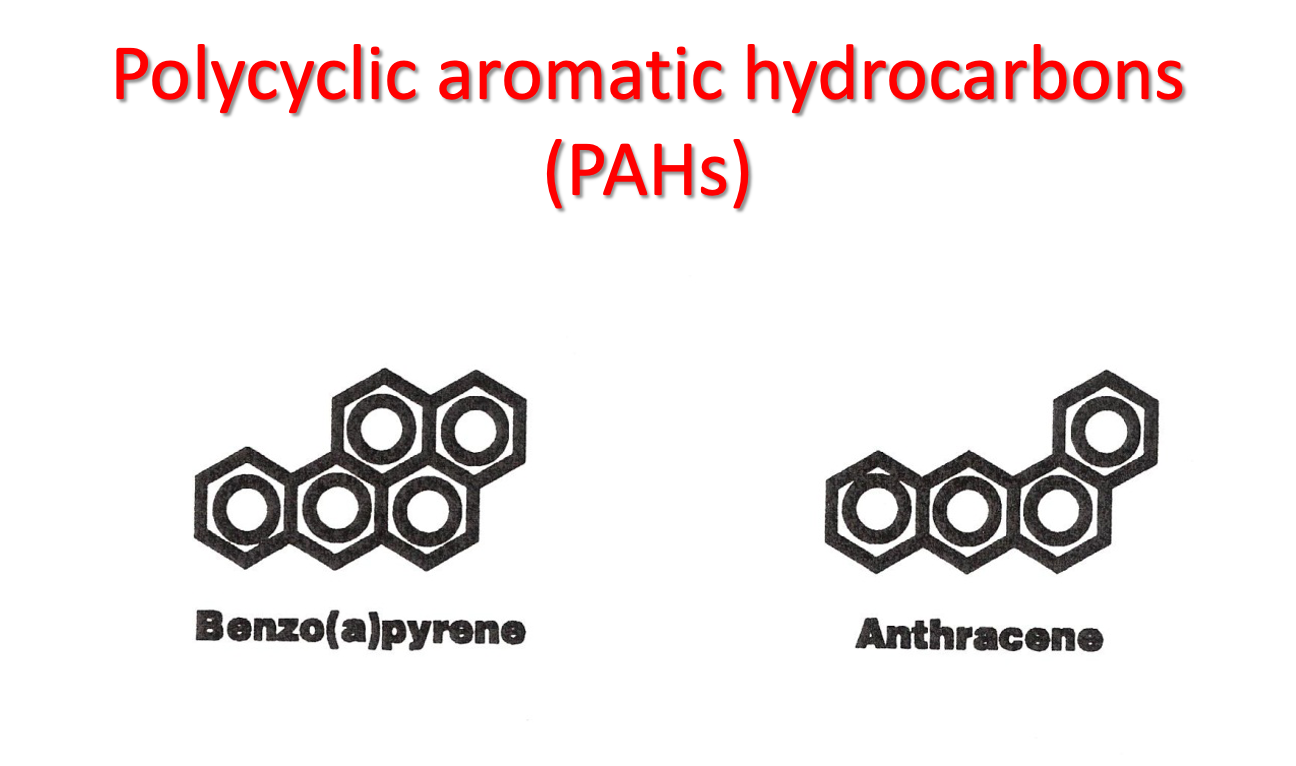
Benzo[a]pyrene activation and DNA adduct formation
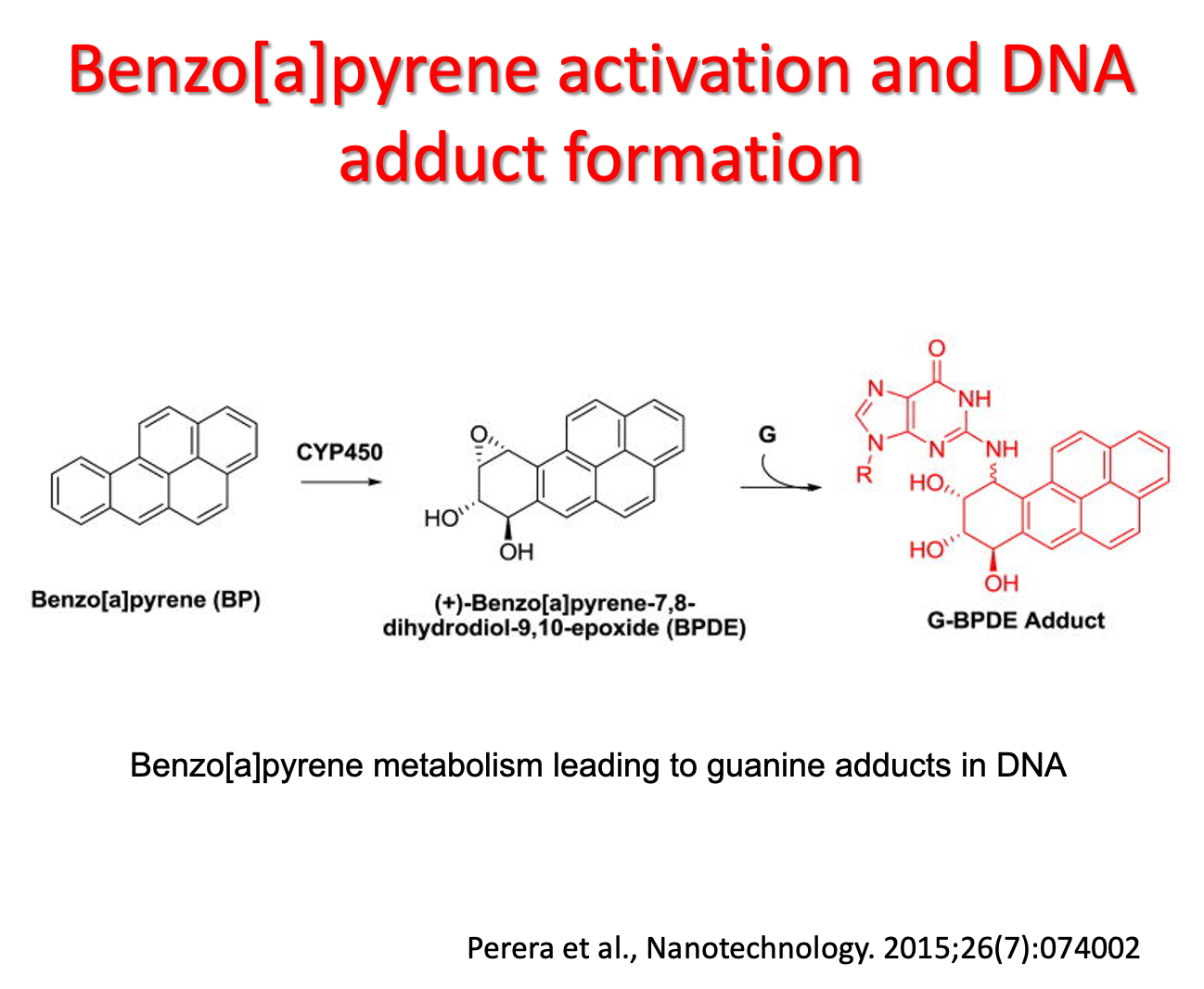
metabolism of PAH in the liver

French Fries: What happens to the oil used in deep fryers?
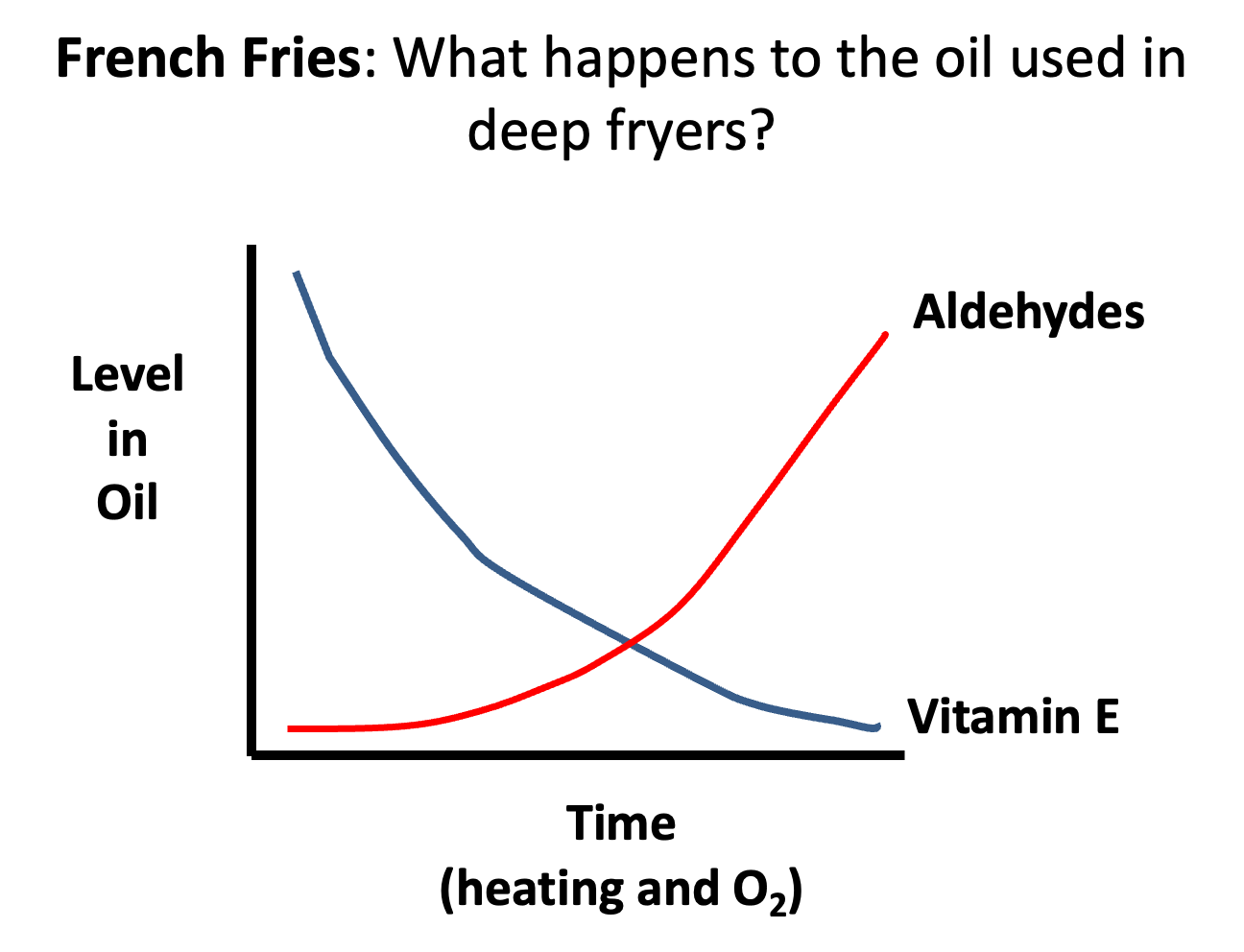
Stages of carcinogenesis

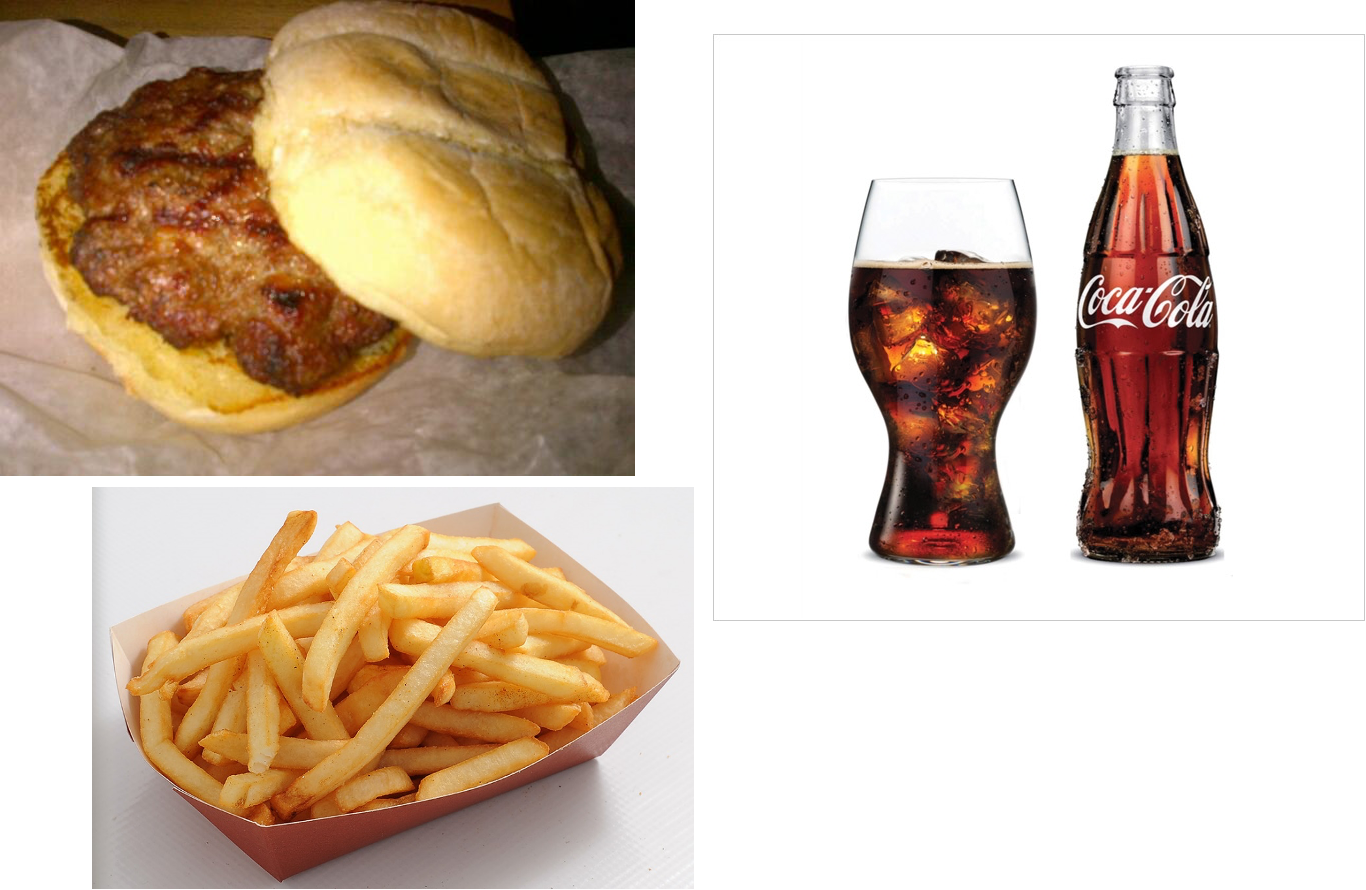
issue with meal 1
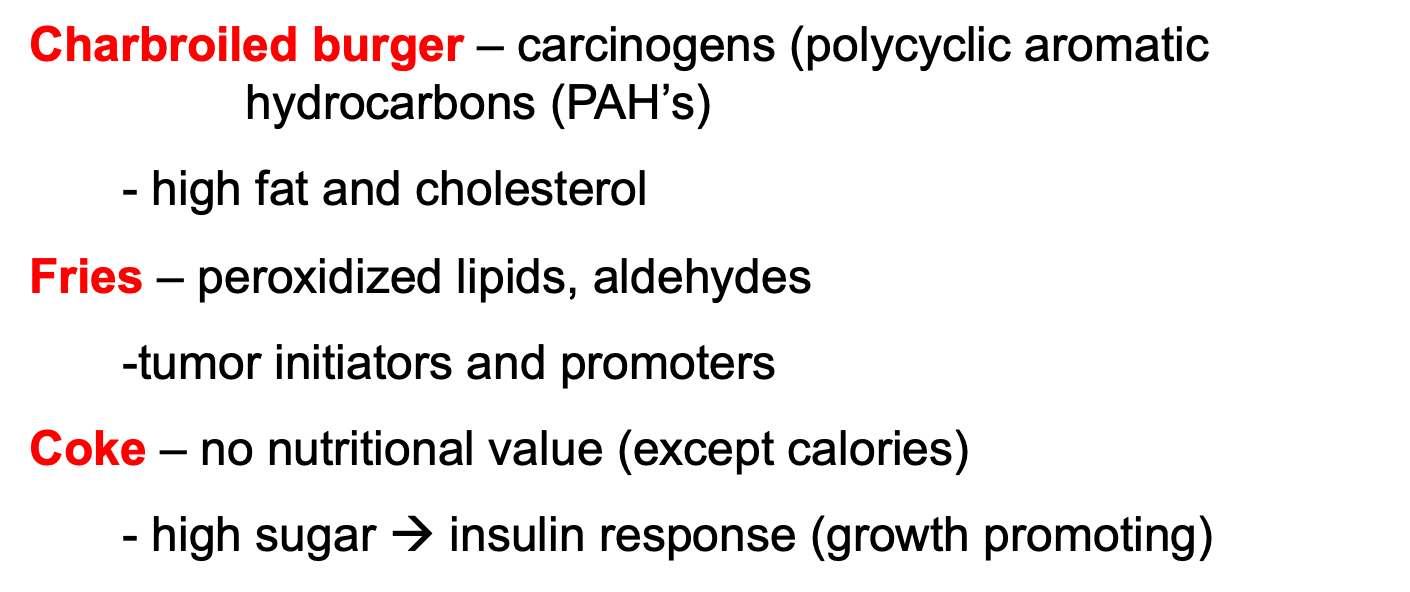
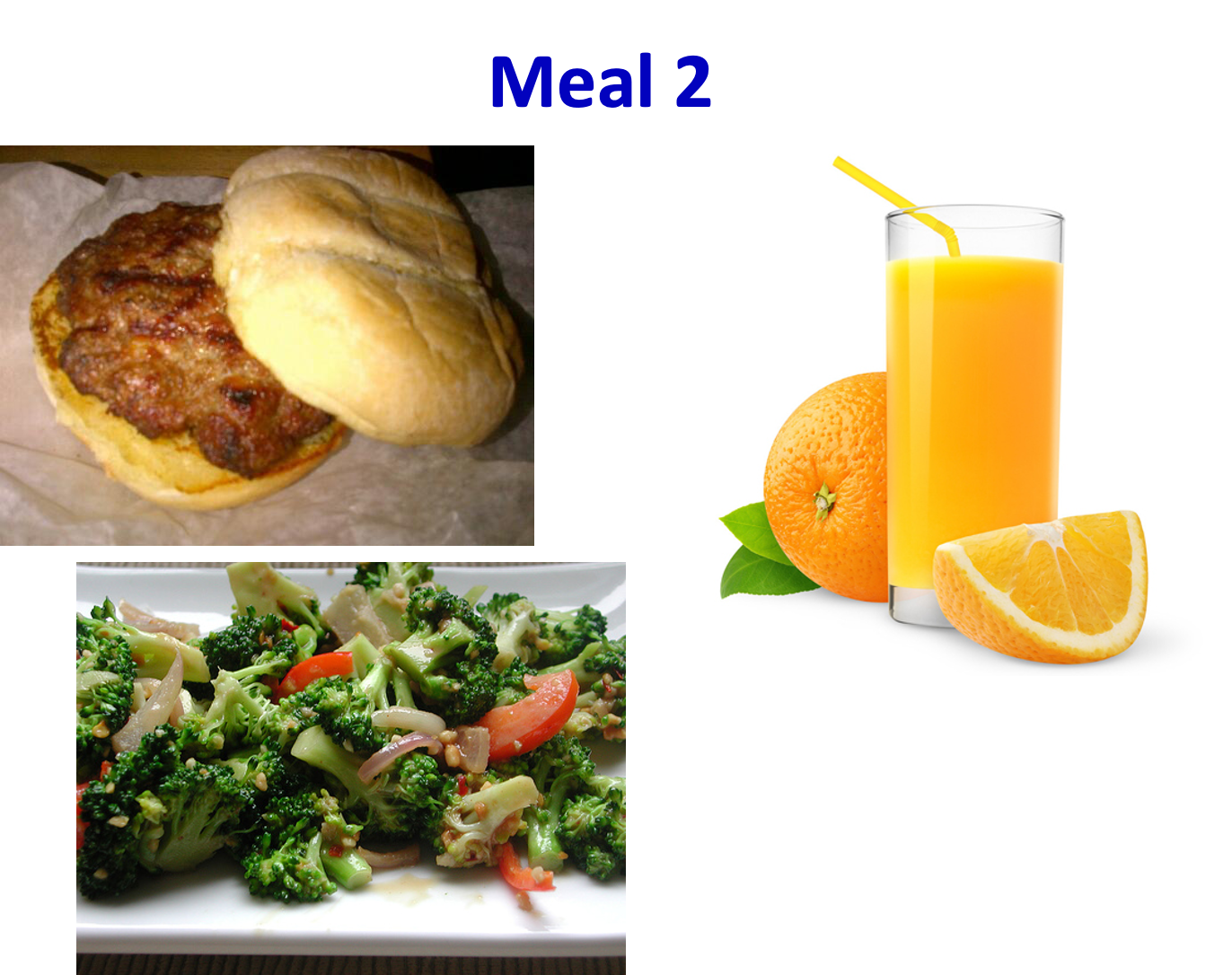
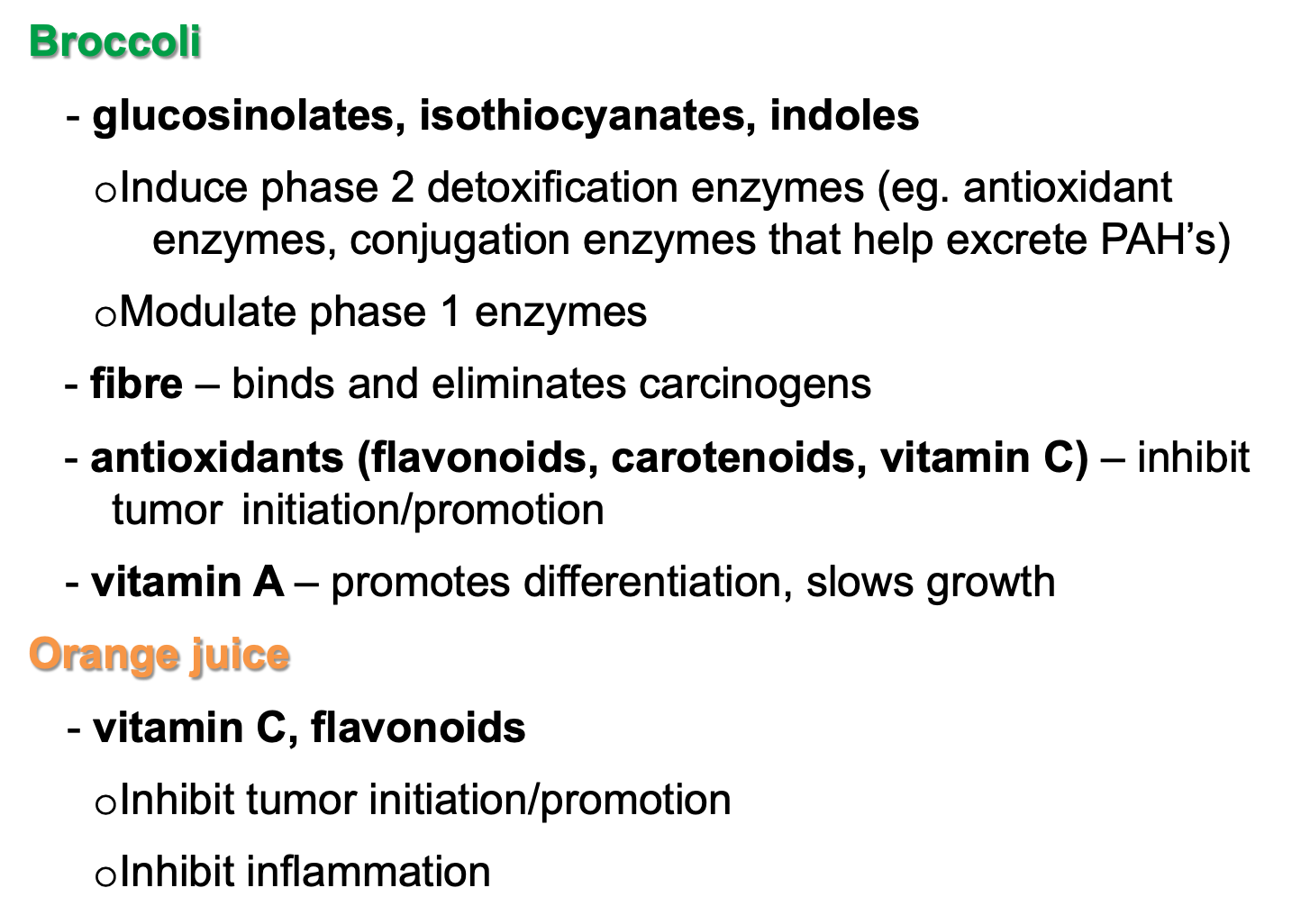
Role of Phytochemicals in Cancer
